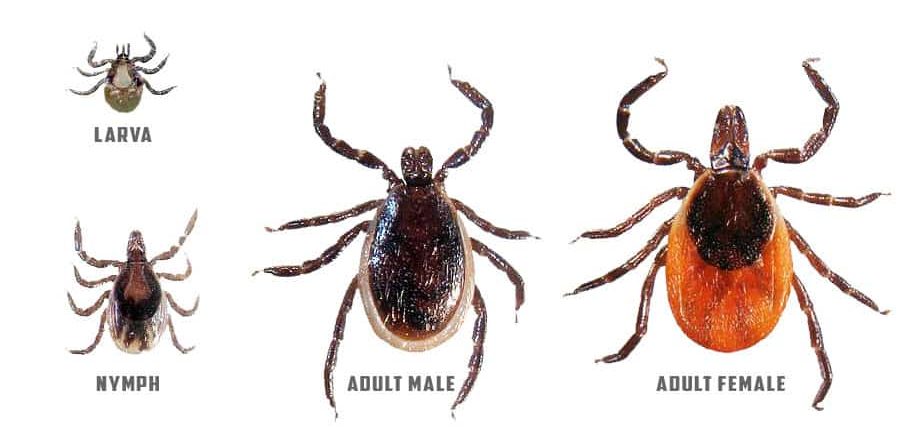Ticks are more than just a nuisance; they can pose serious health risks to our furry friends. Understanding what a tick looks like on a dog is crucial for your pet’s well-being. In this guide, we’ll delve deep into the world of ticks, and what to do if you do find one on your pup.
The Anatomy of a Tick
Ticks are arachnids, closely related to spiders. They have a flat, oval shape and become more rounded as they feed. Here’s a breakdown of their anatomy:
- Body: Typically small, flat, and oval-shaped.
- Legs: They have eight legs, with the front pair being sensory organs called ‘hallers organ’.
- Mouthparts: Visible when viewed from above, they’re used to pierce the skin and feed on blood.
Did You Know? Ticks can’t jump or fly. They simply crawl onto hosts.
Identifying Ticks on Your Dog
- Size and Colour: Ticks can be as small as a pinhead or as large as a pencil eraser. Their colour varies from brown and black to reddish-brown or grey.
- Location: Ticks favour warm, moist areas. Check around your dog’s ears, between their toes, under the collar, and around the eyelids.
- Feeding State: A newly attached tick may be hard to spot. As they feed, they swell and become more noticeable.
Top tip: If you have a long haired dog hold the fur back and check the skin directly
Common UK Tick Species and Their Appearance
Ixodes Ricinus (Sheep Tick or Castor Bean Tick)

- Appearance: Reddish-brown with darker legs.
- Habitat: Woodlands, heathlands, and areas with long grass.
Ixodes Hexagonus (Hedgehog Tick)

- Appearance: Dark brown to black.
- Habitat: Found on hedgehogs but can transfer to dogs.
Dermacentor Reticulatus (Ornate Cow Tick)

- Appearance: Brightly patterned and ornate.
- Habitat: Grasslands and urban areas.
The Dangers of Ticks
Ticks are vectors for various diseases, including:
- Lyme Disease: Caused by the bacterium Borrelia burgdorferi. Symptoms in dogs include fever, lameness, and swollen joints.
- Anaplasmosis: Affects the dog’s blood cells leading to symptoms like joint pain and fever.
- Babesiosis: Causes destruction of a dog’s red blood cells, leading to anaemia.
Expert Tip: Always consult a vet if your dog shows signs of illness after a tick bite.
Effective Tick Removal
Use fine-tipped tweezers or a tick removal tool:
- Grasp the tick as close to the dog’s skin as possible.
- Pull upward with steady, even pressure.
- Clean the bite area and your hands with rubbing alcohol or soap and water.
- Dispose of the tick by flushing it down the toilet.
Caution: Avoid twisting or jerking the tick as this can cause parts of it to break off and remain in the skin.
Preventing Tick Infestations
- Regular Checks: Especially after walks in wooded or grassy areas.
- Tick Repellents: Consult your vet for recommended products.
Unique Insights: Ticks and Climate Change
Recent studies suggest that the increasing global temperatures are expanding the habitats of ticks. This means areas previously deemed ‘safe’ might now be tick hotspots. Being aware of these changes and adapting is crucial for dog owners.
Study Link: Impact of Climate Change on Tick Habitats
In Conclusion: Stay Vigilant, Stay Safe
Ticks might be small, but their impact on our dogs can be significant. By understanding what a tick looks like on a dog and taking preventive measures, you can ensure your furry friend stays tick-free and healthy. Remember, when in doubt, always consult a veterinarian.
Emma Wally is the founder of thedoggeeks.com, a website for dog owners in the UK and the rest of the world. Emma has a lifelong love of dogs and has devoted years to learning and training dogs of various kinds and ages.
Emma’s Experience
Emma’s love for dogs and animals started as a child with looking after many different pets from fish, to dogs and even sheep. This love for animals led her into the world of dog training; with a real passion in positive reinforcement techniques.
Dog training specialist
Emma has completed multiple certifications in dog training, focussing on positive reinforcement techniques.
Puppy socialisation group
Emma is also the founder of 'Stony Stratford Puppy and Dog Group'. This growing community of dog enthusiasts provides weekly socialistion for new puppies and dogs wanting to integrate into socialisation, as well as giving specialist training advice for dog owners wanting to address problems... Or just wanting to give their pup the best life they can!
Meet Kobe!
Kobe is Emma's current fluffy best friend. Being a Tibetan Terrier she can be stubborn at times but has the biggest personality for such a small dog.
Passionate about Dogs
Emma Wally is more than just a dog trainer; she is a mentor, a guide, and a friend to all dog owners seeking to build a better relationship with their furry companions. Her commitment to enhancing the lives of dogs and their owners is evident in every piece of advice she shares, making her a trusted and respected figure in the dog training community. Trust Emma, and you trust a true dog geek.
